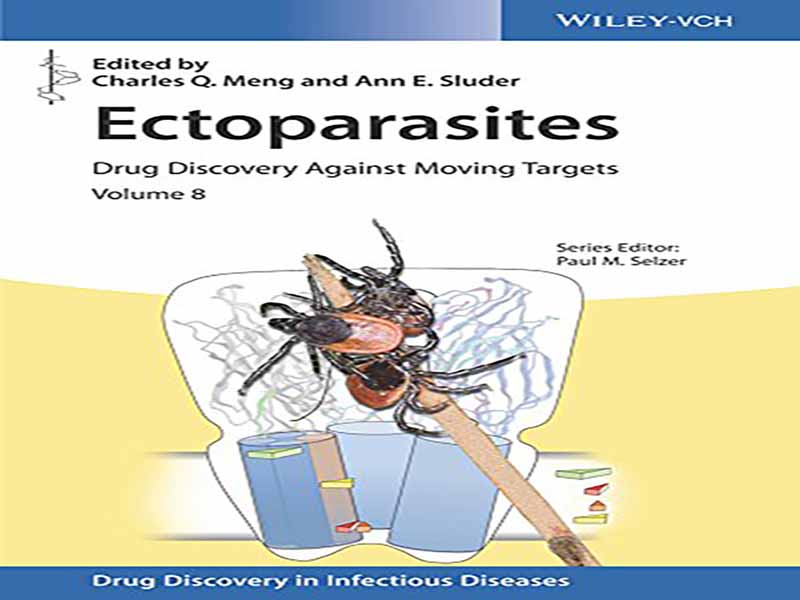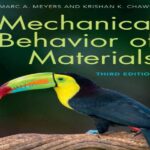تلاشهای انسانها برای کنترل تأثیر انگلهای خارجی بر سلامت خود و حیوانات مرتبط با آنها در طول زمان ثبت شده ثبت شده است. در 100 سال گذشته، ما شاهد دستاوردهای عمده ای برای کنترل انگل های خارجی با استفاده از حشره کش های مصنوعی بوده ایم. اما در طول زمان، ما دریافتیم که این دستاوردها اپیزودیک هستند، در درجه اول به دلیل مسائل زیست محیطی و انتخاب مقاومت دارویی در جمعیت های بندپایان. بنابراین، کشف مداوم داروهای جدید و ایمن برای کنترل انگلهای خارجی یک نیاز مدرن است. جلد 8 از مجموعه کشف دارو در بیماری های عفونی تصویر لحظه ای ارزشمندی از جدول زمانی مبارزه برای کنترل انگل های خارجی ارائه می دهد. نویسندگان مشارکت کننده دیدگاه های فعلی در مورد کنترل انگل های خارجی و انتقال عوامل بیماری، استراتژی هایی برای کشف و توسعه داروها، و توسعه و استفاده بالقوه ایزوکسازولین ها ارائه کرده اند. انگلهای خارجی با مکانیسمهای مستقیم و غیرمستقیم بر سلامت انسان و حیوانات تأثیر میگذارند و کاهش این تأثیرات مختلف با رویکردهایی غیروابسته به آفتکشها امکانپذیر است. برنامه کنترل برای کرم پیچ در جهان جدید با استفاده از رهاسازی در سطح منطقه نرهای عقیم در کنترل تأثیر مستقیم میاز اجباری در آمریکای شمالی و مرکزی بسیار مؤثر بوده است. برنامههای منطقهای برای کنترل اثرات غیرمستقیم انگلهای خارجی، مانند استفاده از واکسنها برای محافظت در برابر عوامل بیماریهای ناقلی مانند تب زرد، و کنترل انکوسرسیاز با هدف قرار دادن جمعیتهای میکروفیلاریال انسان نیز مؤثر بوده است. با این حال، موفقیت این برنامه ها بر اساس پارامترهای بسیار خاصی است که منجر به برنامه های کاربردی محدود می شود، که نیاز به روش های کنترل طیف گسترده تر را در اولویت قرار می دهد. نیاز به کشف دارو برای استفاده در کنترل انگل های خارجی انسان و حیوانات همچنان عامل اصلی حفظ سلامت انسان و حیوان خواهد بود. رویکرد One Health این واقعیت ها را در نظر می گیرد که این موجودات قابل تفکیک نیستند و تنها به دلیل تغییرات جهانی در محیط و همچنین رشد و جابجایی جمعیت انسانی اهمیت بیشتری خواهند یافت. اکثر بیماریهای انسانی که از طریق ناقل منتقل میشوند، چرخههای مشترک بین انسان و دام دارند که میتواند با استفاده مؤثر از کنترل انگلهای خارجی تحت تأثیر قرار گیرد. حتی برای آنتروپونوزهایی مانند مالاریا و لیشمانیوز احشایی، منابع خونی مشترک بین انسان و دام، گونه های زیادی از ناقلان بالقوه پاتوژن ها را حفظ می کنند که عامل اصلی مرگ و میر در انسان هستند. انگلهای خارجی واقعاً یک هدف متحرک برای تلاشهای کنترلی نسبت به تراکم و حساسیت جمعیت نشان میدهند. استفاده به موقع و منطقی از داروهای موجود و جدید علیه این اهداف متحرک و در یک مرحله جهانی در حال تغییر می تواند اهرمی برای انسان در نژاد ما در برابر انگل های خارجی ایجاد کند، تا زمانی که کشف و توسعه داروهای جدید و موثر بتواند سرعت را حفظ کند.
The attempts of humans to control the influence of ectoparasites on the health of themselves and their associated animals have been documented throughout recorded time. Within the past 100 years, we have witnessed major gains for ectoparasite control with the use of synthetic insecticides; but through time, we have found that these gains are episodic, primarily because of environmental issues and selection of drug resistance in arthropod populations. Therefore, the constant discovery of novel and safe drugs for ectoparasite control is a modern need. Volume 8 of the series Drug Discovery in Infectious Diseases provides a valuable snapshot of the timeline in the battle to control ectoparasites. The contributing authors have provided current perspectives on control of ectoparasites and transmission of agents of disease, strategies for discovery and development of drugs, and the development and potential uses of isoxazolines. Ectoparasites have impacts on human and animal health by both direct and indirect mechanisms, and the reduction of these different impacts can be achieved by approaches that are not dependent on pesticides. The control program for the New World screwworm using the area‐wide release of sterile males has been highly effective in controlling the direct impact of obligatory myiasis in North and Central America. Area‐wide programs to control the indirect effects of ectoparasites, such as using vaccines for protection against agents of vectorborne diseases like yellow fever, and controlling onchocerciasis by targeting the microfilarial populations of humans also have been effective. However, the success of these programs is based on very specific parameters that lead to narrow applications, which leaves the need for broader spectrum control methods as a top priority. The need for drug discovery for use in the control of ectoparasites of humans and animals will continue to be a major factor in the preservation of human and animal health. The One Health approach considers the facts that these entities cannot be separated and will only become more important due to global changes in the environment, as well as human population growth and movement. The majority of vector‐borne human diseases have zoonotic cycles which can be affected by the effective use of ectoparasite control. Even for anthroponoses such as malaria and visceral leishmaniasis, zoonotic blood sources maintain many species of potential vectors of pathogens that are drivers of major causes of death in humans. Ectoparasites do truly represent a moving target for control efforts relative to population density and susceptibility. The timely and rational use of extant and novel drugs against these moving targets and upon a changing global stage can provide leverage for humans in our race against ectoparasites, as long as the discovery and development of new and effective drugs can maintain the pace.
این کتاب را میتوانید بصورت رایگان از لینک زیر دانلود نمایید.
Download: Ectoparasites / Drug Discovery Against Moving Targets




































نظرات کاربران